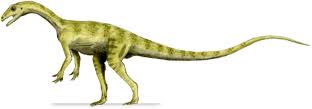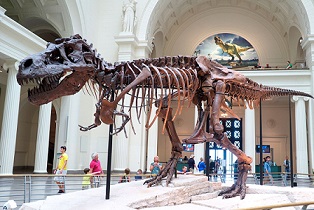
Pantydraco, meaning "Pant-y-dra-co," derives its name from the locality where its remains were discovered. The Welsh name pays homage to the landscape that once cradled this remarkable creature. First introduced to the scientific community in 1995, Pantydraco has since become a vital piece of the puzzle in understanding the evolutionary history of dinosaurs.
Pantydraco belonged to the dinosaur group known as the "prosauropods" characterized by their relatively small size and bipedal locomotion. Measuring around 2 to 3 meters (6.5 to 10 feet) in length, Pantydraco walked on its hind legs, utilizing its long tail and strong limbs for mobility.
| Name: | Pantydraco dinosaurs |
| Size: | Length around 6-9 feet . |
| Main Facts: | Pantydraco pelvic structure indicates shift to more efficient bipedal movement in early dinosaurs, aiding in evolutionary understanding. |
Pantydraco lived during the Hettangian and Sinemurian stages of the early Jurassic, approximately 200 million years ago. This period marked a time of transition in Earth's history, with the aftermath of the Triassic-Jurassic extinction event shaping new ecological niches and diversification of life.

As a prosauropod, Pantydraco was likely a herbivore, feeding on plants and foliage. Its unique jaw structure and dental adaptations provide insights into its dietary preferences and how it processed vegetation in the early Jurassic landscape.
Pantydraco roamed the ancient landmass that would eventually become Wales. The region was characterized by lush vegetation, rivers, and a diverse array of flora and fauna, creating a rich and vibrant ecosystem for Pantydraco and its contemporaries.
Pantydraco holds an important place in the evolutionary tapestry of dinosaurs. As an early prosauropod, it provides valuable information about the origins and diversification of this group, shedding light on the pathways that led to the development of larger, more specialized sauropods.
Studying Pantydraco alongside other early Jurassic dinosaurs offers insights into ecological interactions, predator-prey relationships, and the coexistence of different dinosaur species. This comparative approach enhances our understanding of the complex web of life during this pivotal period.
Comparing Pantydraco with related dinosaurs found in other regions contributes to our understanding of paleogeography and the distribution of early Jurassic fauna across different landmasses. Such comparisons help us reconstruct the ancient world's interconnectedness.
Pantydraco, a small to medium-sized dinosaur of the Late Triassic, about 210 million years ago, stood out with its bipedal stance and intriguing pelvic structure, suggesting a shift towards more efficient movement. Measuring around 6 to 9 feet in length, Pantydraco's fossils provide crucial insights into the evolution of early dinosaurs' locomotion and anatomical features. Its teeth adapted for capturing prey imply a carnivorous diet, although specifics remain debated.
Inhabiting an environment of arid landscapes and early forests, Pantydraco coexisted with various reptiles and early mammals. Its significance lies in unraveling the evolutionary puzzle of prehistoric life, offering a glimpse into the challenges and adaptations that shaped the ancient world.
Pantydraco, measuring around 6 to 9 feet in length, falls on the smaller end of the dinosaur size spectrum. In contrast, larger dinosaurs like the mighty sauropods and fearsome theropods, such as Tyrannosaurus rex, surpassed Pantydraco significantly in size, reaching lengths of up to 100 feet or more.
Pantydraco's bipedal stance, with its intriguing pelvic structure, hints at a transition toward more efficient movement on two legs. This adaptation allowed for improved agility and could have facilitated exploration of different environments. In contrast, many other dinosaurs, especially sauropods and quadrupedal theropods, relied on a quadrupedal stance for stability and efficient movement, which suited their larger sizes and feeding habits.
Pantydraco's carnivorous diet, likely focused on smaller vertebrates and insects, contrasts with the varied diets of other dinosaurs. For instance, sauropods were herbivorous giants, consuming vast quantities of vegetation, while some theropods were apex predators, preying on other dinosaurs and large prey animals.
Pantydraco's unique pelvic structure sets it apart from many other dinosaurs, as it shows a mix of primitive and advanced traits. This characteristic highlights its place in the evolutionary timeline, offering insights into the gradual development of more specialized anatomical features. Comparisons with other dinosaurs' pelvic structures can provide clues about the evolution of locomotion and posture.
Pantydraco's fossils have been found in England, providing evidence of its presence in a specific ancient ecosystem. In contrast, other dinosaurs were distributed across various continents, adapting to diverse environments and climates.
Pantydraco's role in its Late Triassic ecosystem likely differed from that of other dinosaurs in later periods. Its smaller size and carnivorous diet suggest a different ecological niche compared to the massive herbivores and predators of the Jurassic and Cretaceous periods.